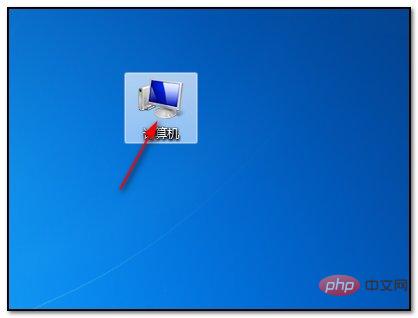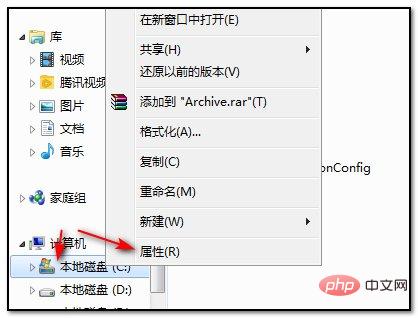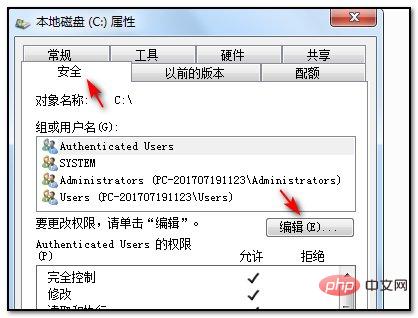Solution: First double-click on the computer to open "Computer"; then select "Local Disk c", right-click the mouse and select the "Properties" function; then select the "Security" tab in the pop-up dialog box , select "Edit"; finally click "Authenticated Users" and check "Allow" of "Full Control".

The operating environment of this tutorial: Windows 7 system, Dell G3 computer.
The main reason is that the user's security setting permissions are incorrect. The specific steps to change the settings are as follows:
Find and double-click "Computer" on the computer desktop;

After opening the computer, right-click "Local Disk C" in the lower left corner of the interface and click the "Properties" function in the drop-down option;




FAQ column!
The above is the detailed content of What to do if a file is locked and can only be opened in read-only mode. For more information, please follow other related articles on the PHP Chinese website!